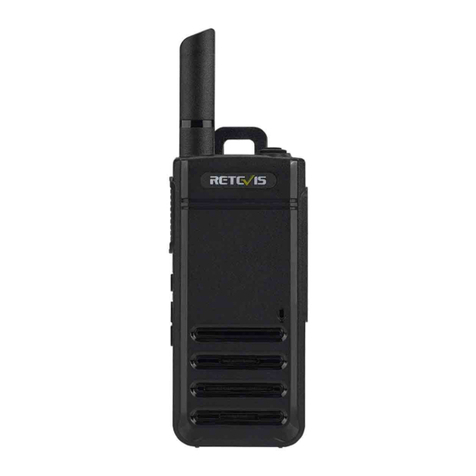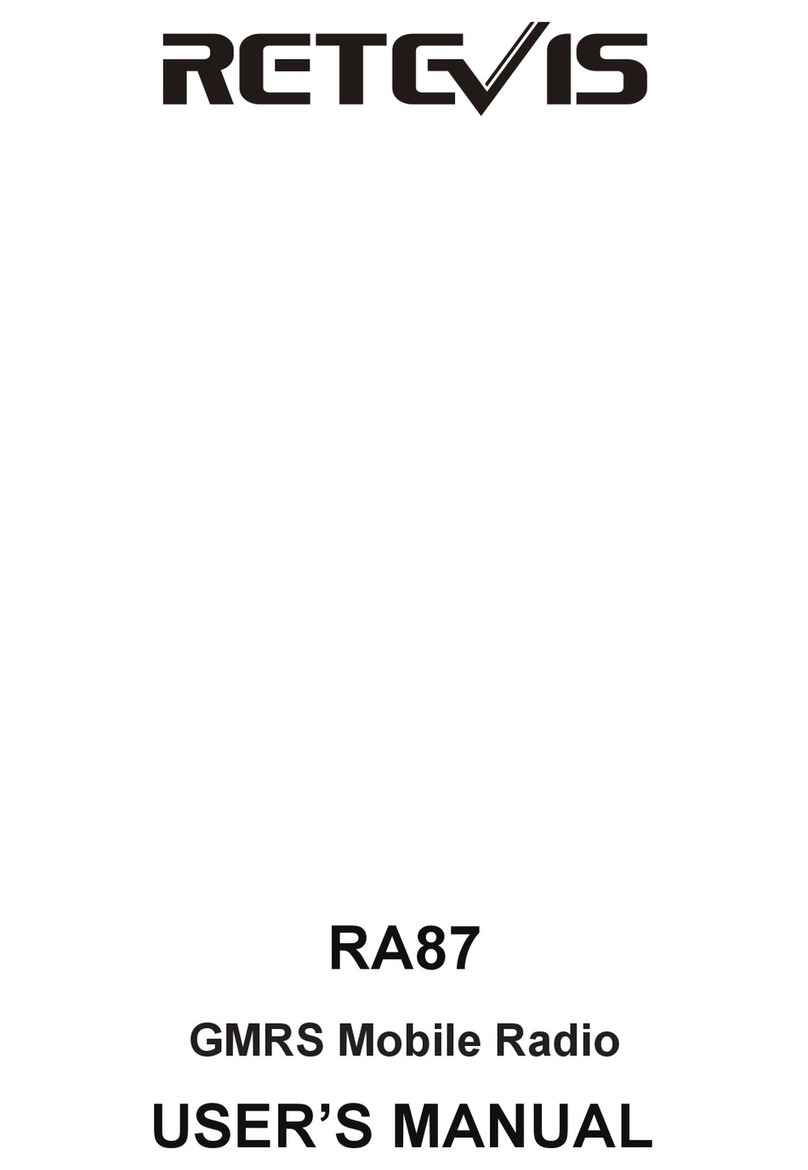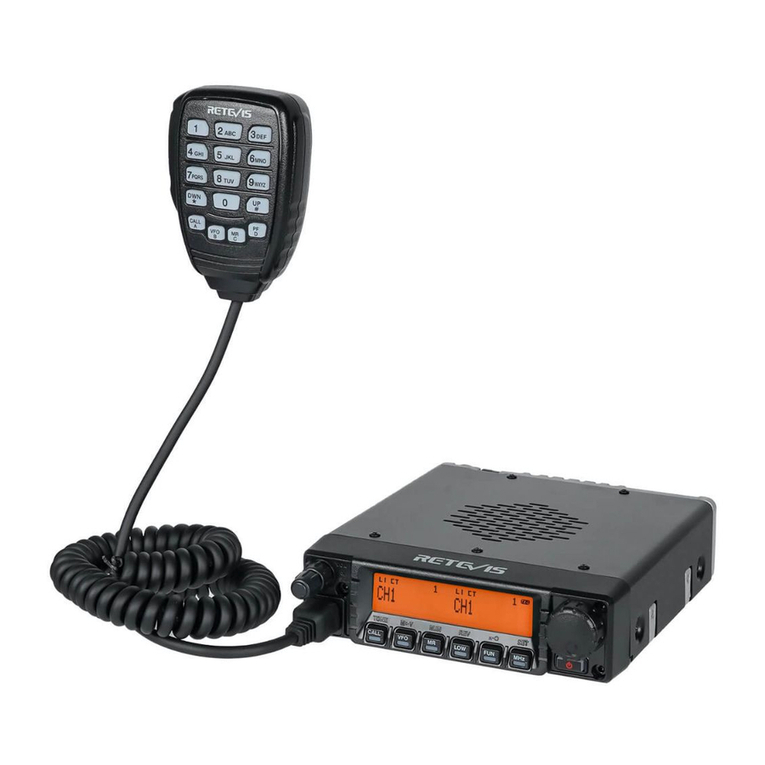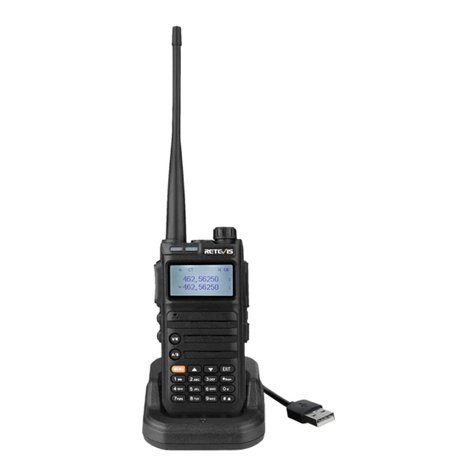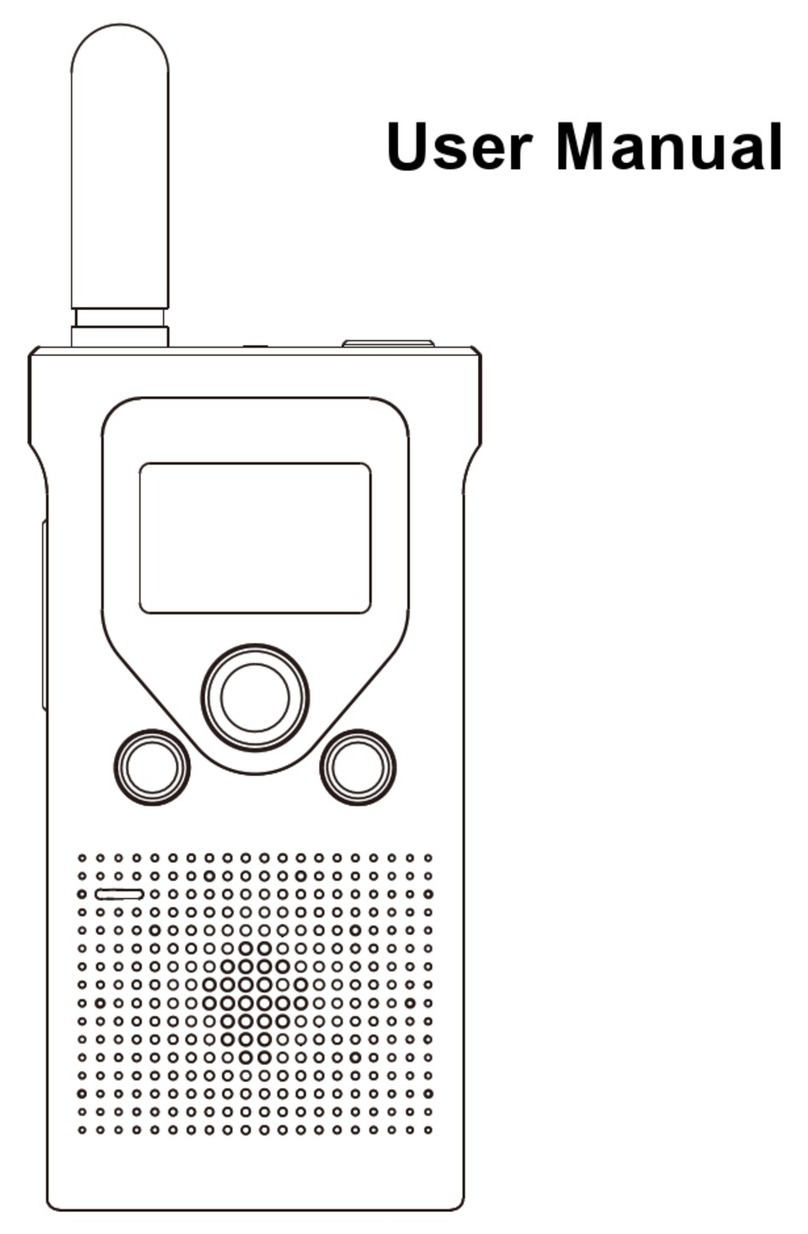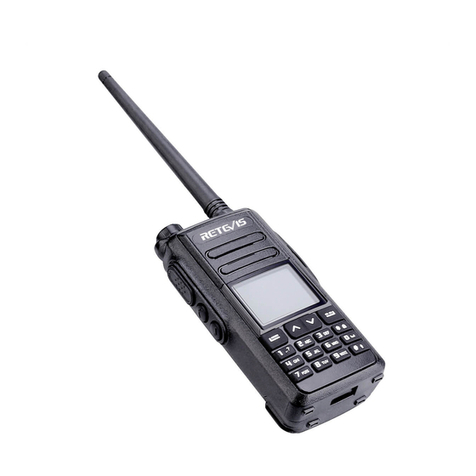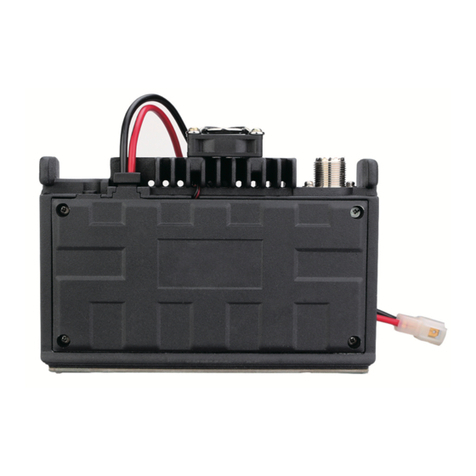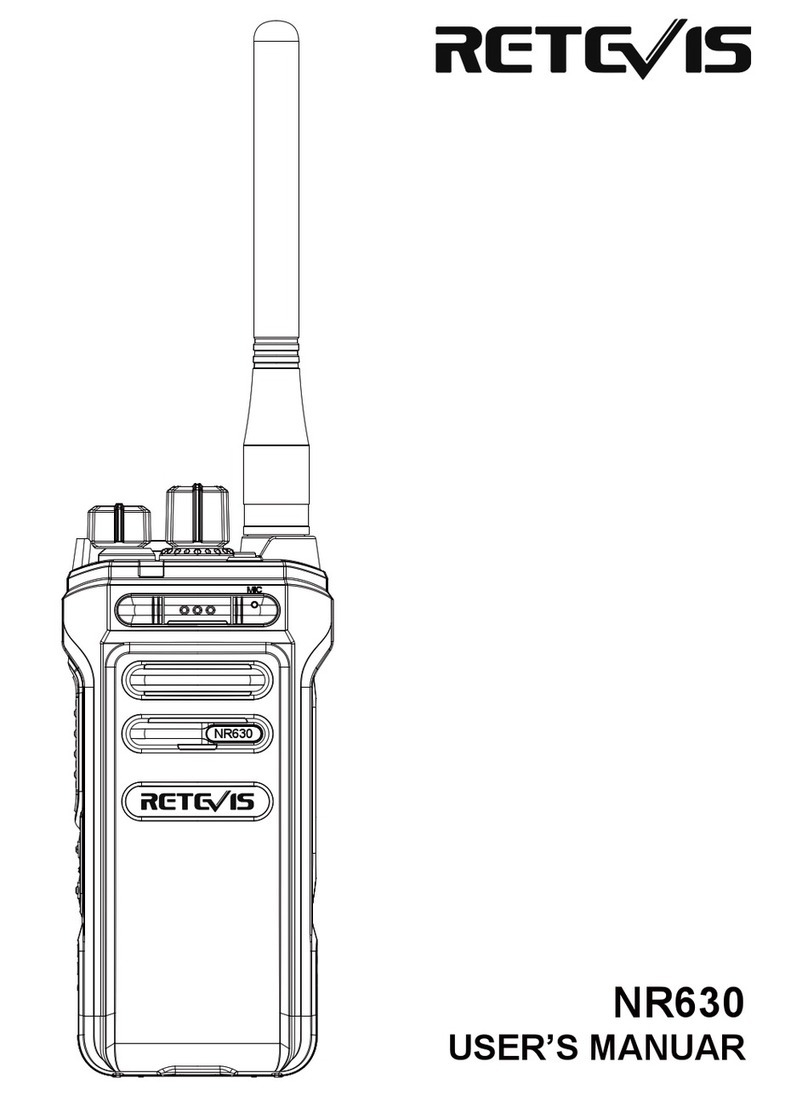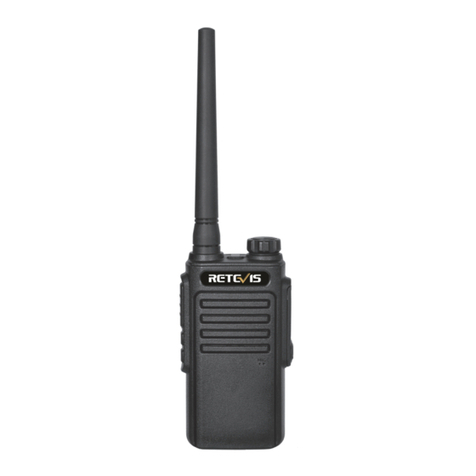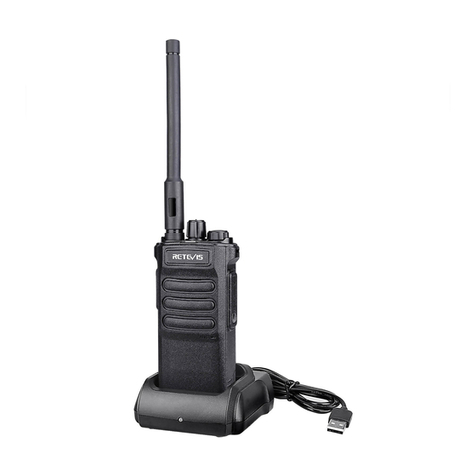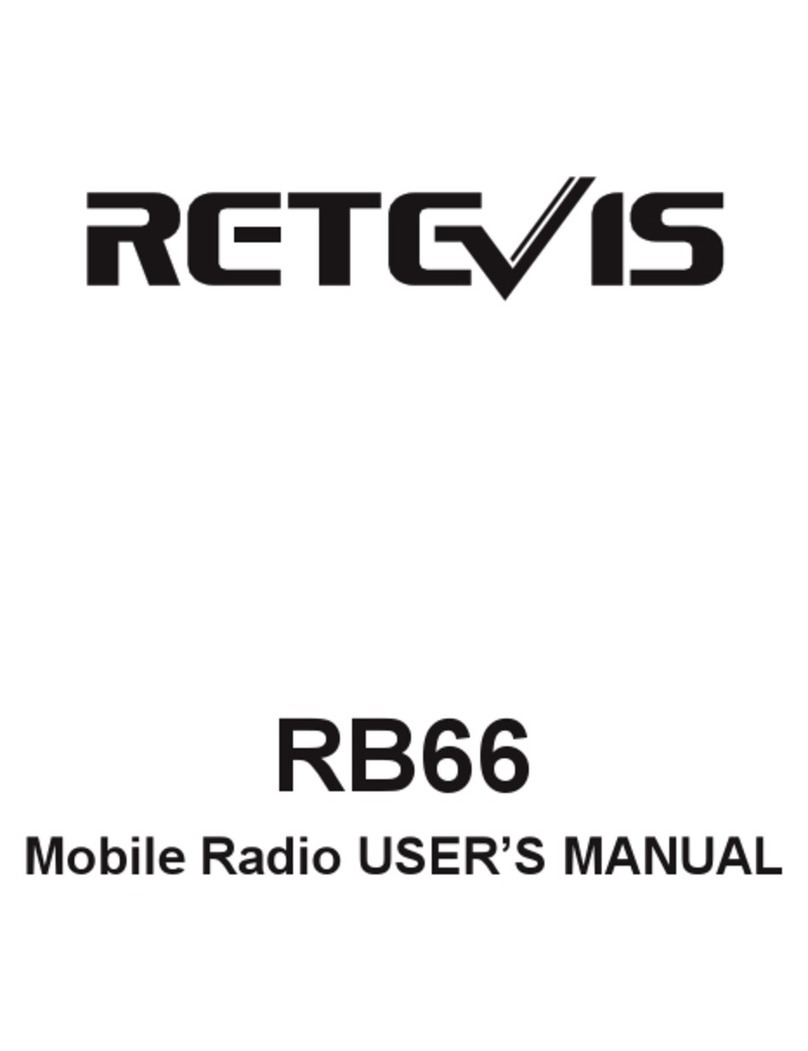
NOTE: This equipment has been tested and found to comply with the limits for a Class A digital
device, pursuant to part 15 of the FCC Rules. These limits are designed to provide reasonable prote-
ction against harmful interference when the equipment is operated in a commercial environment.
This equipment generates, uses, and can radiate radio frequency energy and, if not installed and
used in accordance with the instruction manual, may cause harmful interference to radio communica-
tions. Operation of this equipment in a residential area is likely to cause harmful interference in which
case the user will be required to correct the interference at his own expense.
CE Requirements:
• (Simple EU declaration of conformity) Shenzhen Retevis Technology Co., Ltd. declares that the
radio equipment type is in compliance with the essential requirements and other relevant provisions
of RED Directive 2014/53/EU and the ROHS Directive 2011/65/EU and the WEEE Directive 2012/
19/EU; the full text of the EU declaration of conformity is available at the following internet address:
www.retevis.com.
• Restriction Information This product can be used in EU countries and regions, including: Belgium
(BE), Bulgaria (BG), Czech Republic (CZ), Denmark (DK), Germany (DE), Estonia (EE), Ireland (IE),
Greece (EL), Spain (ES), France (FR), Croatia (HR), Italy (IT), Cyprus (CY), Latvia (LV), Lithuania
(LT), Luxembourg (LU), Hungary (HU), Malta (MT), Netherlands (NL), Austria (AT), Poland (PL),
Portugal (PT), Romania (RO), Slovenia (SI), Slovakia (SK), Finland (FI), Sweden (SE) and United
Kingdom (UK). For the warning information of the frequency restriction, please refer to the package
or manual section.
• Disposal
The crossed-out wheeled-bin symbol on your product, literature, or packaging reminds you that in
the European Union, all electrical and electronic products, batteries, and accumulators (rechargeable
batteries) must be taken to designated collection locations at the end of their working life. Do not
dispose of these products as unsorted municipal waste. Dispose of them according to the laws in
your area.
IC Requirements:
Licence-exempt radio apparatus This device contains licence-exempt transmitter(s)/receiver(s) that
comply with Innovation, Science and Economic Development Canada’s licence-exempt RSS(s). Ope-
ration is subject to the following two conditions:
(1) This device may not cause interference.
(2) This device must accept any interference, including interference that may cause undesired ope-
ration of the device. Le présent appareil est conforme aux CNR d’Industrie Canada applicables aux
appareils radio exempts de licence. L’exploitation est autorisée aux deux conditions suivantes :
(1) l’appareil ne doit pas produire de brouillage;
(2) l’utilisateur de l’appareil doit accepter tout brouillage radioélectrique subi, même si le brouillage est
susceptible d’en compromettre le fonctionnement.
RF Exposure Information
•DO NOT operate the radio without a proper antenna attached, as this may damage the radio and
may also cause you to exceed RF exposure limits. A proper antenna is the antenna supplied with this
radio by the manufacturer or an antenna specifically authorized by the manufacturer for use with this
radio, and the antenna gain shall not exceed the specified gain by the manufacturer declared.
•DO NOT transmit for more than 50% of total radio use time, more than 50% of the time can cause
RF exposure compliance requirements to be exceeded.
•During transmissions, your radio generates RF energy that can possibly cause interference with
other devices or systems. To avoid such interference, turn o the radio in areas where signs are
posted to do so.
•DO NOT operate the transmitter in areas that are sensitive to electromagnetic radiation such as hos-
pitals, aircraft, and blasting sites.
•Portable Device, this transmitter may operate with the antenna(s) documented in this filing in
Push-to-Talk and body-worn configurations. RF exposure compliance is limited to the specific belt-clip
and accessory configurations as document ed in this filing and the separation distance between user
and the device or its antenna shall be at least 2.5 cm.
DeliboM•evice, during operation, the separation distance between user and the antenna subjects to
actual regulations, this separation distance will ensure that there is su cient distance from a properly
installed externally-mounted antenna to satisfy the RF exposure requirements.
•Occupational/Controlled Radio, this radio is designed for and classified Occupational/Controlled
umtignimaem,”ylnOesU st be used only during the course of employment by individuals aware of
the hazards, and the ways to minimize such hazards; NOT intended for use in a General population/
uncon trolled environment.
•General population/uncontrolled Radio, this radio is designed for and classified as “ General popula-
tion/uncontrolled Use”.
RF Exposure Compliance and Control Guidelines and Operating Instructions
To control your exposure and ensure compliance with the occupational/controlled environment expo-
sure limits, always adhere to the following procedures.
Guidelines:
•User awareness instructions should accompany the device when transferred to other users.
•Do not use this device if the operational requirements described herein are not met.
Operating Instructions:
•Transmit no more than the rated duty factor of 50% of the time. To Transmit (Talk), push the Push to
Talk (PTT) button. To receive calls (listen), release the PTT button. Transmitting 50% of the time, or
less, is important because the radio generates measurable RF energy exposure only when transmit-
ting in terms of measuring for standards compliance.
•Transmit only when people outside the vehicle are at least the recommended minimum lateral distan-
ce away from a properly installed according to installation instructions, externally mounted antenna.
•When operating in front of the face, worn on the body, always place the radio in a Retevis approved
clip, holder, holster, case, or body harness for this product. Using approved body-worn accessories is
important because the use of Non-Retevis approved accessories may result in exposure levels,
which exceed the IEEE/ICNIRP RF exposure limits.
Hand-held Mode
• Hold the radio in a vertical position with the microphone (and other parts of the radio including the
antenna) at least 2.5 cm (one inch) away from the nose or lips. The antenna should be
kept away from the eyes. Keeping the radio at a proper distance is important as RF
exposure decreases with increasing distance from the antenna.
Phone Mode
• When placing or receiving a phone call, hold your radio product as you would a wireless telephone.
Speak directly into the microphone.
Electromagnetic Interference/Compatibility
-edanifi)IME(ecnerefretnicitengamortceleotelbitpecsussiecivedcinortceleyreveylraeN:ETON
quately shielded, designed, or otherwise configured for electromagnetic compatibility.
Avoid Choking Hazard
Small Parts. Not for children under 3
years.
Turn off your radio power in the following conditions:
910

